Diagnostic and prognostic predictive values of triggering receptor expressed on myeloid cell-1 expression in neonatal sepsis: A meta-analysis and systematic review
- PMID: 35935355
- PMCID: PMC9354627
- DOI: 10.3389/fped.2022.929665
Diagnostic and prognostic predictive values of triggering receptor expressed on myeloid cell-1 expression in neonatal sepsis: A meta-analysis and systematic review
Abstract
Objective: The purpose of this systematic review was to explore the value of the expression level of the triggering receptor expressed on myeloid cell-1 (TREM-1) in the diagnosis and prognosis of neonatal sepsis.
Methods: A comprehensive search was performed to identify the diagnostic and prognostic predictive values of the TREM-1 expression level in neonatal sepsis. Based on the retrieval strategy, Cochrane Library, Embase, Ovid, ProQuest, PubMed, Scopus, and Web of Science databases were searched from inception to February 2022. Studies were included if they assessed the accuracy of TREM-1 expression in the diagnosis of neonatal sepsis and distinguished survival and death in neonatal sepsis. Two authors independently evaluated the study and extracted the data, including the first author of the literature, country, total study population, basic population characteristics of the study group and the control group, study design (observational studies), type of sample, sepsis onset, type of biomarker, assay method, cut-off, sensitivity, specificity, true positives (TP), false positives (FP), false negatives (FN), and true negatives (TN). A third party will be consulted if disputed. The accuracy of TREM-1 expression in the diagnosis and prognostic prediction of neonatal sepsis was evaluated by a bivariate mixed-effects model. The source of heterogeneity was explored through meta-regression analysis.
Results: Thirteen articles that met the research criteria were included in qualitative analysis, and 11 of them were included in quantitative analysis. The pooled sensitivity, specificity, positive likelihood ratio (PLR), negative likelihood ratio (NLR), diagnostic odds ratio (DOR), and the area under the summary receiver operator characteristic (SROC) curve of soluble TREM-1 (sTREM-1) were 0.94 (95% CI: 0.82, 0.98), 0.87 (95% CI: 0.70, 0.95), 7.36 (95% CI: 2.75, 19.74), 0.07 (95% CI: 0.02, 0.24), 111.71 (95% CI: 13.24, 942.92), and 0.96 (95% CI: 0.94, 0.98), respectively. Meta-regression and subgroup analysis were used to investigate the heterogeneity, owing to non-threshold effects caused by types of test sample and research design. sTREM-1 as a biomarker for distinguishing survival and death in neonates with sepsis had pooled sensitivity, specificity, area under the SROC curve, PLR, NLR, and DOR of 0.95 (95% CI: 0.83, 0.99), 0.98 (95% CI: 0.68, 1.00), 0.99 (95% CI: 0.97, 0.99), 39.28 (95% CI: 2.13, 723.99), 0.05 (95% CI: 0.01, 0.19), and 789.61 (95% CI: 17.53, 35,560.72), respectively.
Conclusion: The study showed that TREM-1 was a potential biomarker for the diagnosis and prognosis of neonatal sepsis. The biggest advantage of this study is that it is the first to comprehensively explore the role of TREM-1 expression in the diagnosis and prognosis of neonatal sepsis. However, there are some limitations in this study, such as the reduced number of clinical studies on TREM-1 expression as a biomarker of neonatal sepsis, regional bias, and differences in detection methods. Hence, more large-scale and high-quality studies are needed to improve diagnostic accuracy.
Systematic review registration: https://www.crd.york.ac.uk/PROSPERO/, identifier: CRD42022338041.
Keywords: STREM-1; TREM-1; diagnosis; neonatal sepsis; prognosis.
Copyright © 2022 Chang, Gao, Deng, Luo and Zhu.
Figures

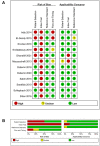
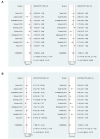

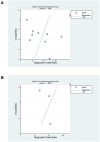
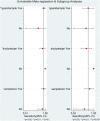

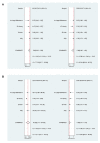
References
-
- GBD 2015 Mortality and Causes of Death Collaborators . Global, regional, and national life expectancy, all-cause mortality, and cause-specific mortality for 249 causes of death, 1980-2015: a systematic analysis for the Global Burden of Disease Study 2015. Lancet. (2016) 388:1459–544. 10.1016/S0140-6736(16)31012-1 - DOI - PMC - PubMed
Publication types
LinkOut - more resources
Full Text Sources
Miscellaneous

